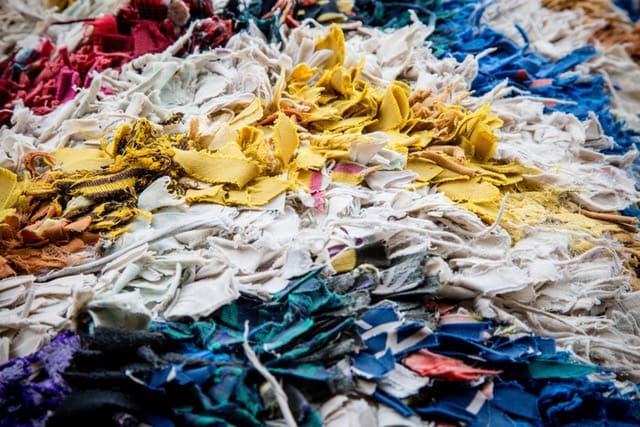Consumerism has quickly become a worrisome topic across the globe. The amount of discarded clothes is increasing and is expected to accelerate even further in the future. Thus, the recycling and reuse of textiles have gained new attention in the textile industry.
While some of the discarded clothes are reused, significant amounts of them end up in landfills. Thus, creating an infrastructure to enable the recycling of textiles and understanding the material composition of textiles is much needed in today’s time and age.
Launch of new infrastructure and programs to encourage recycling of textiles
Today’s textile sorting system depends on the human eye and therefore, is vulnerable to human error. Thus, Fashion for Good, a platform for sustainable fashion innovation recently launched a sorting system to address the challenges in the recycling of textiles. The Sorting for Circularity project brings together major textile brands and market leaders across Europe and will conduct a detailed textile waste analysis using its near-infrared (NIR) technology and by mapping textile recycler’s capabilities. Moreover, the research will help create an open digital platform to match textile waste from major brands with recyclers, which will help build a sustainable infrastructure in the coming years.
Apart from this, some companies are focusing on recycling old clothes and creating something entirely new with it. For instance, REVOLVE, a fashion retailer has joined forces with Recover, a leading producer of recycled cotton fiber to create a new collection of sustainable denim. This partnership highlights the commitment of REVOLVE toward sustainable fashion and creating a more circular fashion industry.
The new collection of recycled denim features 14 styles of jeans, which are designed with a minimum 15% of recycled cotton fiber. The company claims that its innovation replaces the need for cotton cultivation, which ultimately reduces water waste and limits the use of dyes and landfill waste.
Similarly, Penneys, the known fast-fashion retailer has launched a recycling scheme in its 36 stores across Ireland. The lack of knowledge about drop-off locations for used clothes is the major challenge for the recycling of textiles. Even though most consumers want to recycle their clothes instead of throwing them in the garbage, the lack of a proper channel hinders their desire. Thus, The Penneys Textile Takeback program will allow customers to recycle clothes of any brand and in any condition at the company’s shops. This will include clothes, footwear, bags, and other textiles such as towels and bedsheets. These items then will be collected, sorted, and either recycled, re-used, or re-purposed.
One of the world’s largest textile and footwear companies is expected to launch the first blend textile recycling technology in Cambodia. The project will address Cambodia’s increasing textile waste and is an initiative of Deutsche Gesellschaft für Internationale Zusammenarbeit GmbH (GIZ FABRIC project, Chip Mong Insee, the Hong Kong Research Institute of Textiles and Apparel Limited (HKRITA), VF Corporation, and H&M Foundation. This project is expected to complete in 2022. It is observed that around 10-15% of the total fabric used to create clothes end up in landfill or get burnt. While is it possible to recycle single materials, recycling blend textiles such as cotton and polyester blends is not possible, which is the most common type of textile in the fashion industry. This project will focus on recycling these textiles.
Future of recycling textiles
It is observed that more than 30% of all old clothes are not fit to wear and the number is increasing. If those who do not sell their old clothes at the flea market, drop their clothes at the recycling stations, the majority of the textiles will not end up in the landfill. Moreover, researchers state that instead of sorting textiles according to type but according to material, recycling of textiles can be much more profitable and usable. This way, new clothes can be made from used clothes, creating a circular economy in the textile industry.
According to UK’s Textile Recycling Association (TRA), reused and recycled textiles can offer a sustainable future. The fashion supply chain is responsible for around 10% of the world’s greenhouse gas emissions, which is significantly more than the maritime and aviation industries. However, the industry can help the environment by recycling and reusing clothes, which can reduce carbon emissions by 60%.
According to Allied Market Research, the global recycled textiles market is expected to reach $7.6 billion by 2027, growing at a CAGR of 3.6% from 2020 to 2027. An increase in awareness among consumers and manufacturers and reduced CO2 emission and water consumption have boosted the growth of the market.
With the advent of new technologies in the recycling of fabric, the future of the fashion industry is greener than we can expect. The sound choices of users regarding purchasing new clothes, encouraging reuse of clothes, and developing new infrastructure for recycling old textiles, can open new opportunities in the textile industry.
Author Name: Swamini Kulkarni

